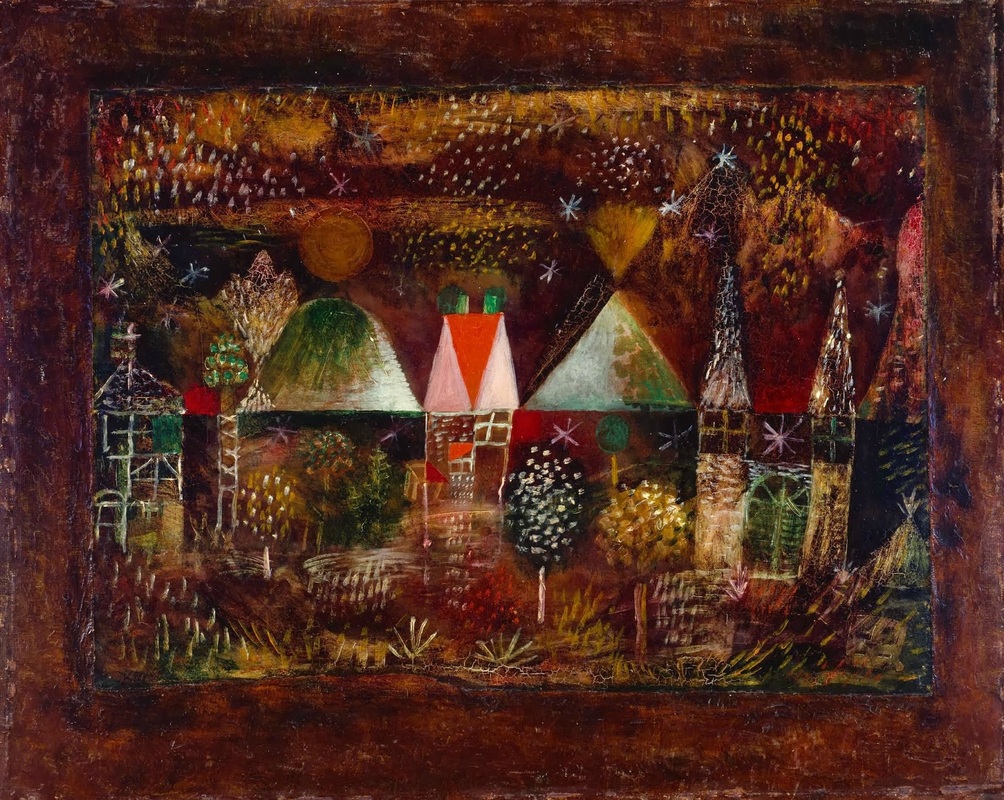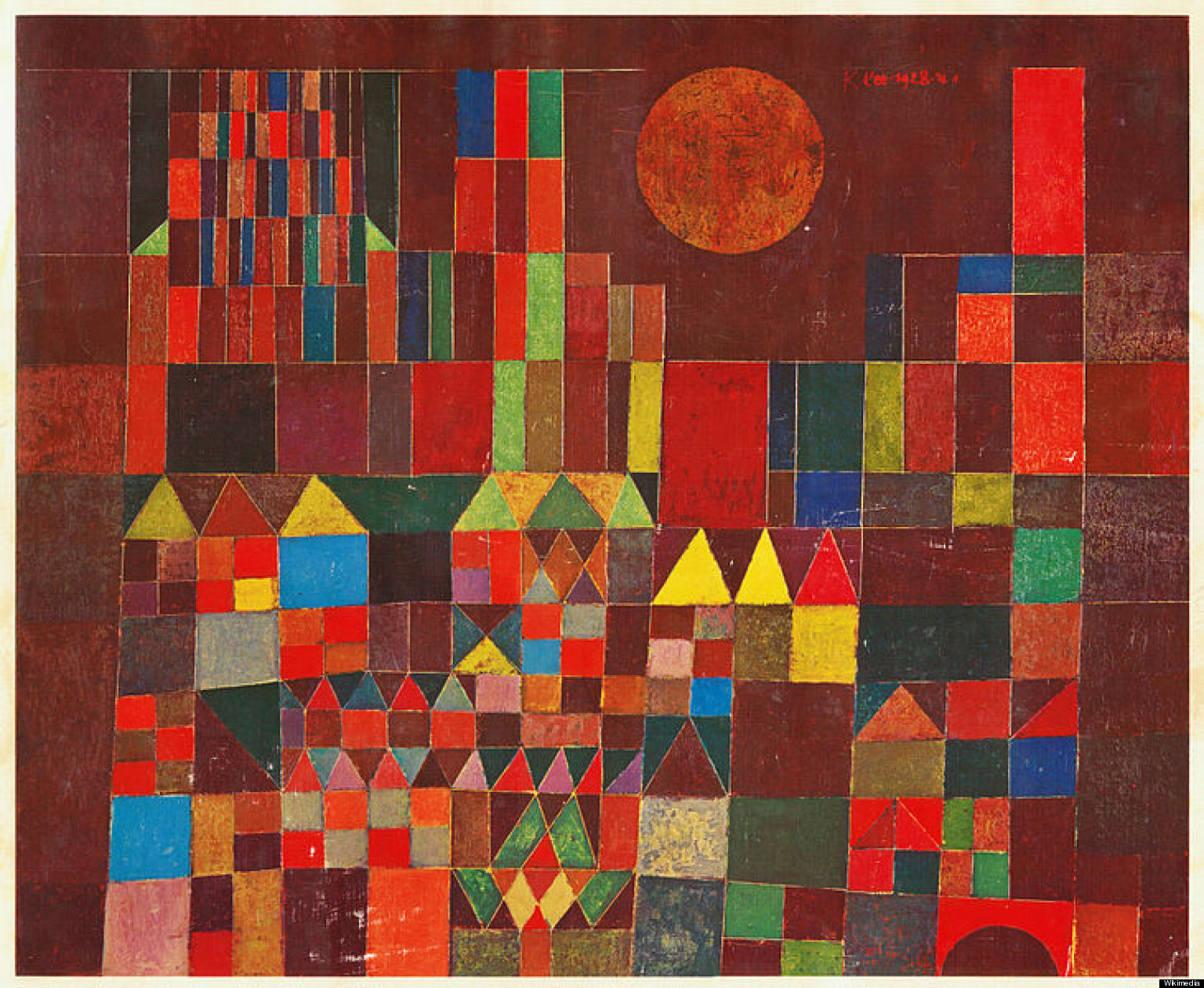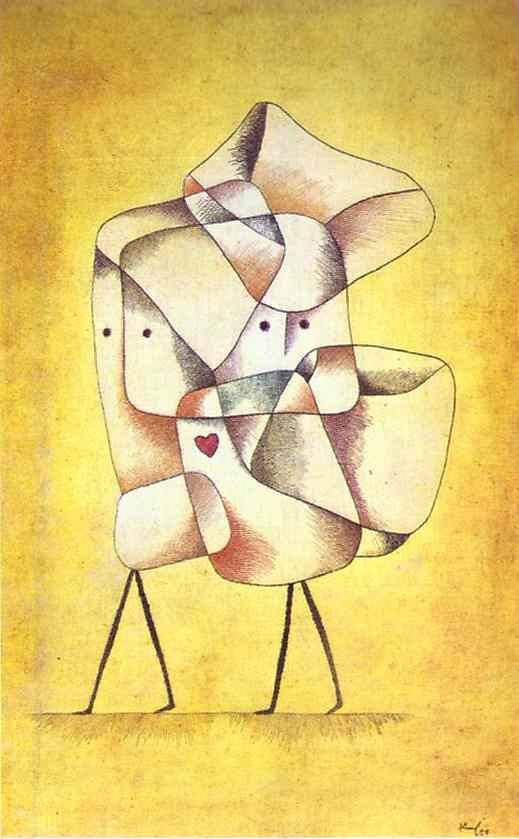Lately Kevin and I have talked about how I haven't really done any artwork in probably a year now. I've done some photography here and there, but never really been active in my artwork. So I thought about our conversations a lot and came up with an idea. The idea is to look at other artwork and artists again to hopefully get inspired to create my own again. I will research an artist a week and post my thoughts on the artist here in my blog every week. This week I decided to research Paul Klee. Here's what I've found and what my thoughts are on this artist.
 |
| Nocturnal Festivities, 1921 |
This is one of my favorites that I've seen so far of his work. Klee was known for his "pointillism" style he used a lot. He used a needle on blackened glass to draw when he was younger. He also seems to use an etching technique in a lot of his work. If you can think back to your grade school days and ever did an art class where you scratch away black paint to reveal color underneath... He used a similar type of technique a lot in his work. There seems to be a lot of layers to some of his artwork. He used a lot of different surfaces to work with too. He used a lot of gauze and burlap in his work. He liked to mix mediums as well.
.jpg) |
| Ad Parnassum, 1932 |
This is considered to be one of his masterpieces according to a few articles I've read so far. This showcases his pointillism technique. I guess this was one of his larger works as well. He tended to work small.
 |
| Burg und Sonne (Castle and Sun), 1928 |
This painting is really interesting to me because it is used in schools teaching geometric shapes. I'm sure there are other lessons you could learn from this painting, but that seems to be the main lesson from this painting. There are actual lesson plans made revolving around this painting.
 |
| Siblings, 1930 |
I think this one is my favorite I've seen so far. This kind of puts together his love of shapes and his surrealist flare. I don't know if he ever really considered himself apart of the surrealist movement, but it was said that he really admired Pablo Picasso and actually got to meet him. When describing his style of painting a lot of genres are listed.
Wikipedia lists his influences of expressionism, cubism, and surrealism. You can really see the texture in the background in this painting.
Paul Klee was born in Switzerland and died in Switzerland, but he also lived in Germany a lot of his life as well. His father was a musician and was brought up to also be a musician, but decided it wasn't for him. Although a lot of things I read said that people can tell he has musical training and a mind of a musician
 |
| Insula Dulcamara, 1938. |
Insula Dulcamara is an example of one of his later works. He used a lot of bold and think lines in his paintings. You can see a lot of texture in the background again in this one. He collaged things in this piece. I really enjoy that about his work.
Klee died two years later in 1940. He finished a whopping total of around 9000 pieces of artwork in his career! That's so impressive. He taught as a professor at the Bauhaus for 10 years, and at the Dusseldorf Academy for three years. He also had some pieces in the 1937 German "Degenerate Art" exhibition.
He apparently had a disease later in his life called scleroderma. It's an autoimmune disease that attacks healthy tissues in your body. It creates hardened skin and can effect your organs. Apparently he had a hard time swallowing because of the disease. People say you can see his pain in some of his later pieces. It really started to effect him later in his career up until his death.
 |
| Red Balloon, 1922. |
I leave you with another of my favorites. It's been fun learning about a new to me artist these past 4 days. I'll start a new artist tomorrow so I can be on a regular week schedule for this project I'm starting. Through the things I've read about Paul Klee, he seemed to be his own person but didn't reject things that he experienced in his life. For example, music... His father was a musician and his mother was a singer. He played music growing up and I think he still played throughout the rest of his life. He married a pianist as well. And people say they can see the influence of music in his artwork which I find interesting.
He seemed to do his own thing. He wanted to experience things for himself and let it reflect in his artwork. He traveled to Tunisia and he said it changed his life forever in how he viewed color. It seemed as though he never really said he was apart of any movement really. His work is always classified as something different on a lot of websites I looked at his artwork. Some say expressionism some call it surrealist. I wonder what he would've thought about that.
I feel like I'm rambling a bit here, but all in all I'm so glad I learned about Paul Klee. I enjoy his different techniques and especially that he did a lot of mixed media in his work. As I enjoy doing that as well. I hope you enjoyed reading my perspective on Paul Klee and hope you learned a little something about him too.

.jpg)




No comments:
Post a Comment